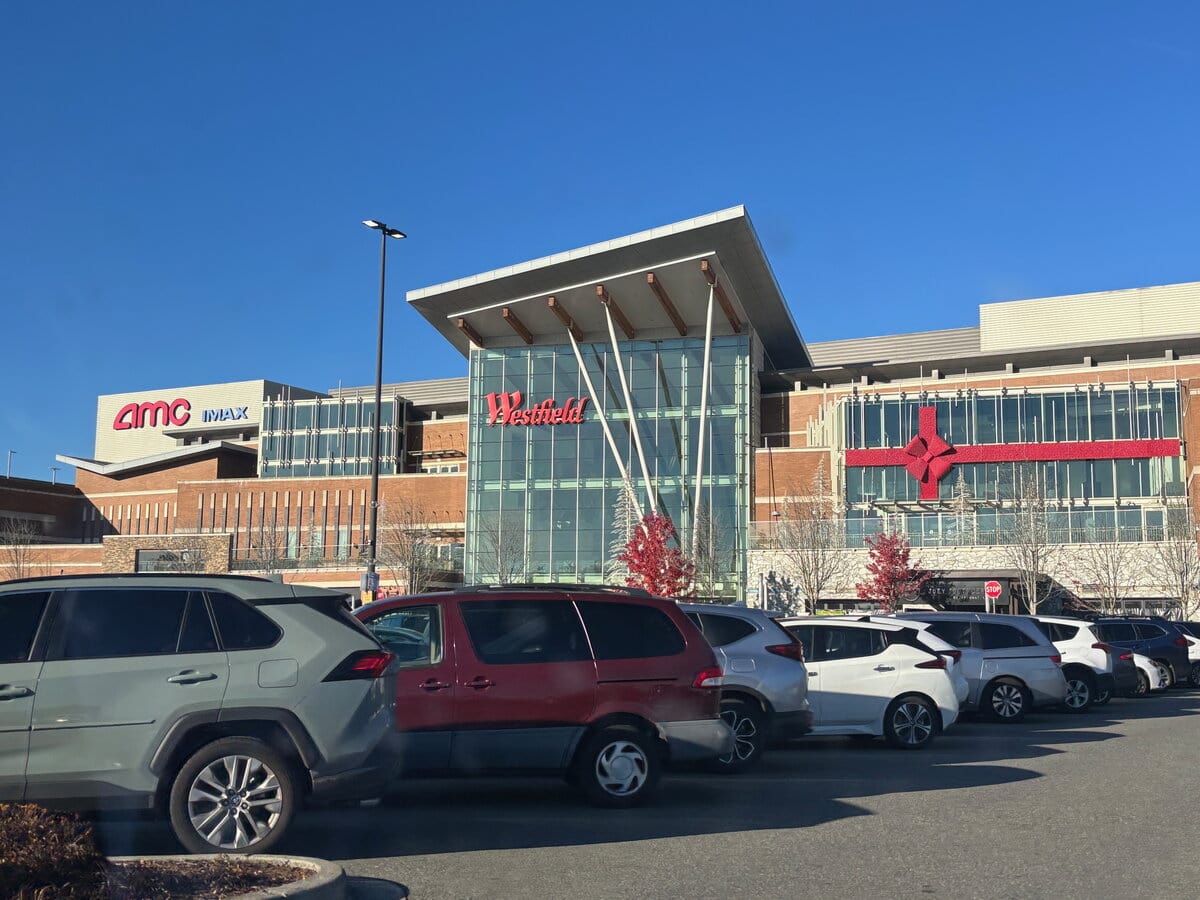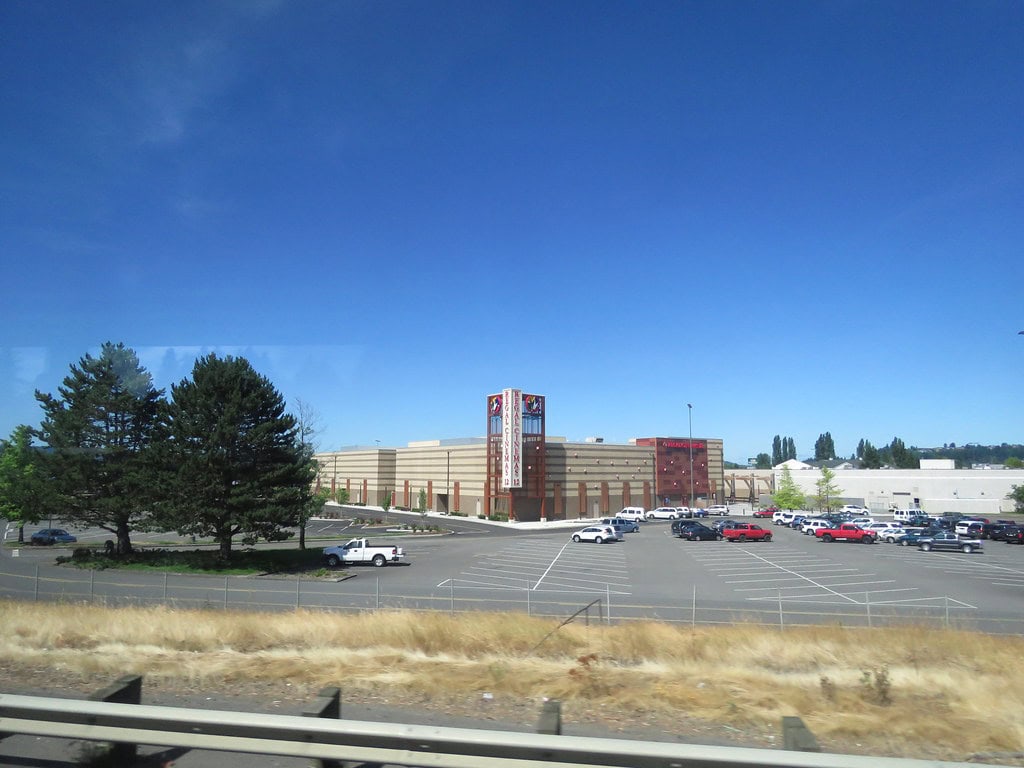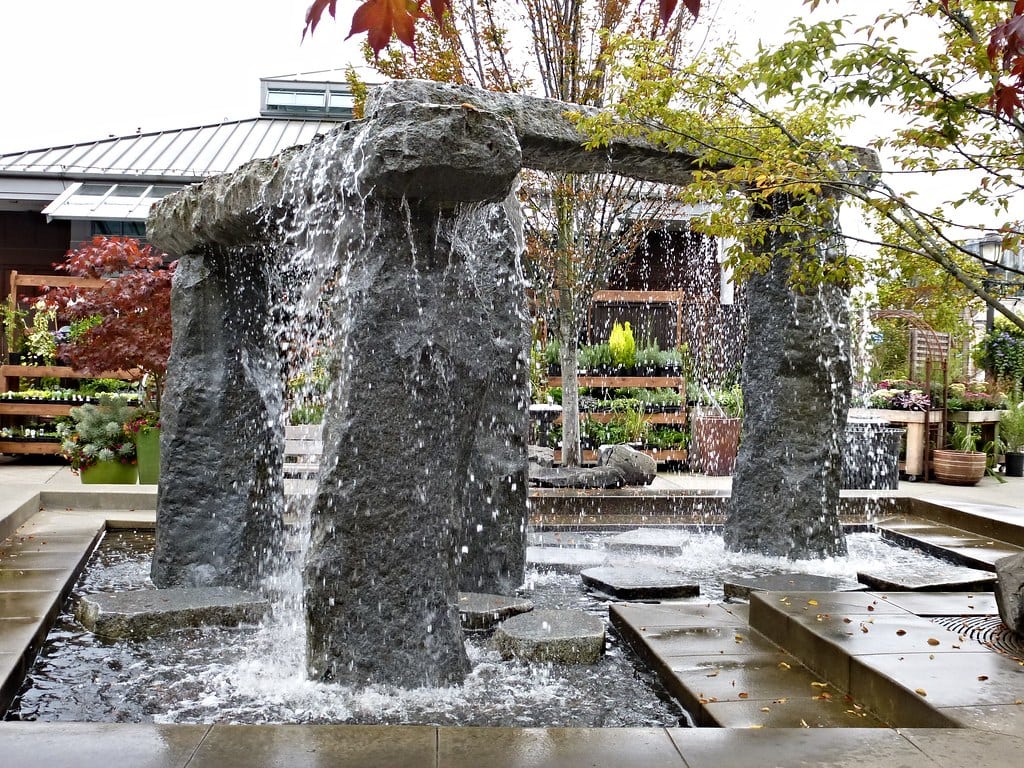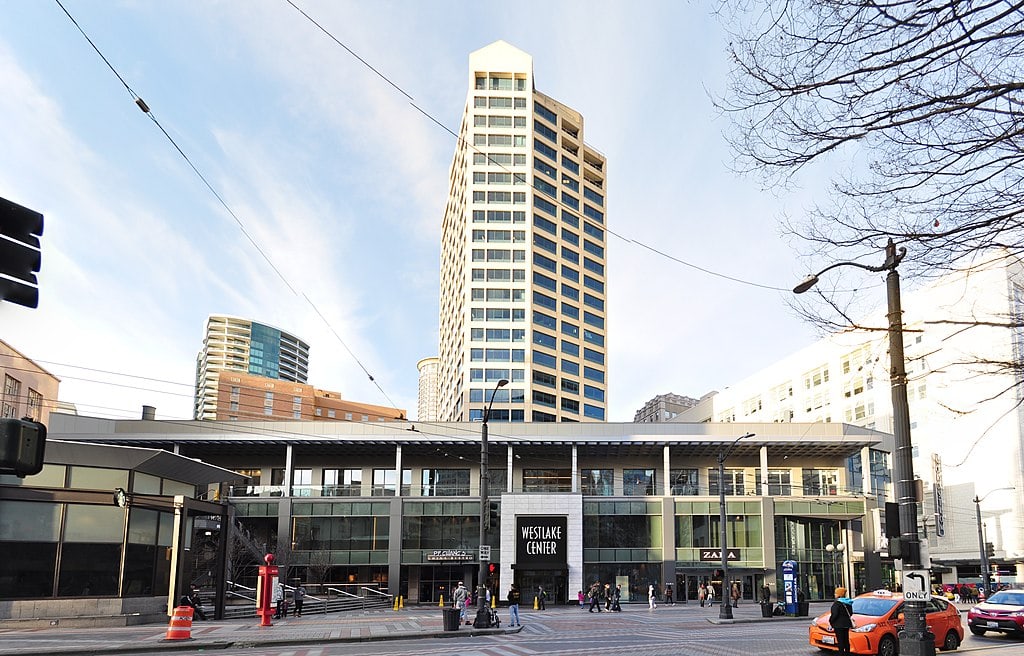The Mall That Once Meant Weekend
Before it was "Alderwood," before the cinema upgrade and the open-air dining patios, it was just Alderwood Mall. People called it that without irony because that's what it was: a mall.
It opened in Lynnwood on October 4, 1979, and by sundown that day, about 30,000 people had already walked through the new corridors, most under fluorescent light.
What stood there before? Not much retail-wise. The development had taken nearly a decade to push through. By the time it opened, The Bon Marché, Nordstrom, Lamonts, JCPenney, and Sears were all inside.
Those were department stores that people actually used. Alderwood grew into something larger, more modern, and eventually more hybrid.
It now exists as a regional hub but still carries traces of its late-70s beginnings.
For anyone searching for things to do north of Seattle, it often ends up on the list, even if it doesn't always top it. But how it got there is a longer story.
Ground-Up Retail - Opening Year and Anchor Strategy
Alderwood Mall did not spring up overnight. The announcement came years before, with land originally held by Allied Stores.
Edward J. DeBartolo Sr., who had developed malls across the country, pushed this one through after nearly a decade of planning.
When it opened on October 4, 1979, the mall was 100 percent enclosed and pulled more than 30,000 visitors on its first day alone.
From the start, the structure was built to house large-scale retail.
It opened with five major anchors: The Bon Marché, Nordstrom, JCPenney, Sears, and Lamonts.
Each one served a purpose in the lineup. The Bon Marché carried household goods and department store apparel.
Nordstrom leaned into upscale clothing. Lamonts, a regional chain, filled the midmarket niche.
Sears pulled weight in appliances and tools, and JCPenney bridged price points.
All five operated simultaneously for several years.
The layout was traditional, with one floor for most retailers and two floors in anchor locations.
Parking for 7,000 vehicles surrounded the structure.
Most entrances fed directly into anchor stores. What wasn't yet in place were the open-air lifestyle additions or mixed-use developments.
That came later when the mall's format started to feel dated.
But in 1979, the formula was simple: keep it covered, keep it big, and make it anchor-driven.

Expansion Moves - Renovations, Add-Ons, and Cinema Real Estate
After holding steady through the 1980s and most of the 1990s, Alderwood Mall saw its first real update in 1995.
That job cost $12 million and focused on the court areas and cosmetic updates, which sounds small now but mattered at the time.
Then came 2002, when Lamonts closed. The vacancy wasn't ignored. That space was bought and torn down to build a new Nordstrom, which opened in 2003.
The old Nordstrom didn't sit long, either. Crews razed it, too, and replaced it with The Village.
The Village was Alderwood's first open-air extension, pitched as a lifestyle center before that term got overused.
It added shops, restaurants, and Borders. Callison Architecture handled the design.
At the same time, The Terraces rose on another side of the property, adding restaurants, a new food court, and an AMC theater.
Back then, it was Loews Cineplex, and it opened on March 25, 2005, sitting on top of a layer of underground parking.
Two new garages joined the build-out. By then, Alderwood had pivoted hard from standard mall layout to hybrid commercial zones.
Borders shut in 2011 during the company's bankruptcy.
The bones of the space lingered. The cinema kept the Loews name until 2018, years after the AMC merger.
Anchor Losses and Redevelopment Sales - The Mixed-Use Shift
Sears lasted longer than Lamonts but couldn't hold out forever.
Its doors closed in March 2017. By 2019, the 178,000-square-foot building was gone.
That left a gap, but not for long. AvalonBay Communities bought the parcel from Seritage and Brookfield in January 2020.
They broke ground soon after on Avalon Alderwood Place, a residential-retail hybrid, the plan called for 328 apartments and 64,000 square feet of retail below.
The redevelopment brought in names that the old mall had never hosted.
Dave and Buster's opened in August 2022. The original plans had slotted it into the neighboring Lynnwood Place, but those deals fell through.
Dick's Sporting Goods was supposed to anchor the new Avalon retail zone but dropped out.
Fogo de Chão took the space instead, opening on April 21, 2023.
Paris Baguette opened nearby on June 1, 2024.
Brookfield poured $109 million into this phase of work.
It was one of only two mall redevelopments the company finished nationwide by 2024.
The Shake Shack that opened in September 2023 came with a drive-thru.
That was new for Washington state.
The parcel that once held a dying anchor now sells upscale food, drink, and mid-market apartments stacked five floors high.
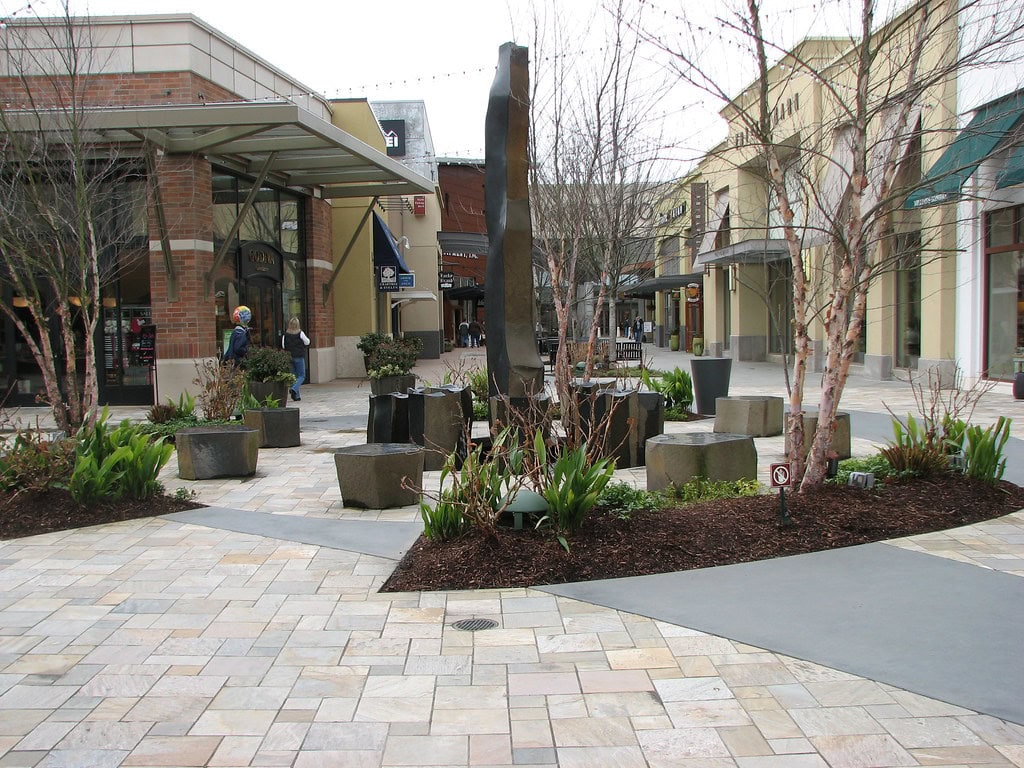
New Tenants, Store Turnover - Retail Leasing from 2023 to 2025
The years 2023 through 2025 brought a shuffle to Alderwood's retail grid.
Uniqlo opened on May 17, 2024, after months of build-out.
Paris Baguette, though a bakery chain with global roots, didn't show up until June 1, 2024.
That one took over part of the redevelopment area near what used to be Sears.
The movement wasn't all inbound. REI, which had opened its store as part of Alderwood's 2004 expansion, closed in March 2025.
They reopened on March 28, 2025, in a larger building at Alderwood Parkway Plaza, occupying what had been Dick's until it left.
The new site gave REI nearly 39,500 square feet, a jump in size and separation from the main mall.
Their departure didn't leave a large vacancy inside Alderwood itself because that store had always sat in one of the external zones.
The off-mall pattern wasn't new by this point.
Daiso had already left its mall footprint in 2017, moving just outside after trying two separate in-mall locations.
The food and apparel mix shifted, but the general arc stayed the same: more standalone, more curated, and less dependent on traditional anchor gravity.
Transit Infrastructure and Site Access - Mobility Investments and Surrounding Buildouts
Transit has been catching up to Alderwood's footprint.
On March 30, 2024, Community Transit launched the Swift Orange Line.
That route links Edmonds College to Mill Creek, passing through Alderwood and Lynnwood City Center station.
It added bus rapid transit to a corridor that hadn't seen much speed before, replacing older, slower local lines.
Stops near the mall aimed to draw foot traffic without overloading vehicle lots.
The Lynnwood City Center light rail station opened later that same year, though actual ridership patterns were still shaking out in early 2025.
It's part of a broader transit shift that includes Sound Transit's long-range Everett Link Extension, which will bring more rail to the area by 2037 if the timelines hold.
Road upgrades came from Snohomish County. A plan to widen Alderwood Mall Parkway was approved, with construction targeted for 2027.
The updates will bring it to five lanes and add protected bike infrastructure, sidewalks, and revised traffic signals.
That stretch sits just east of the mall and has carried more load than it was built for.
The redesign came after years of piecemeal adjustments that couldn't keep pace with mixed-use growth like Avalon Alderwood, nearby KOZ development, and others.
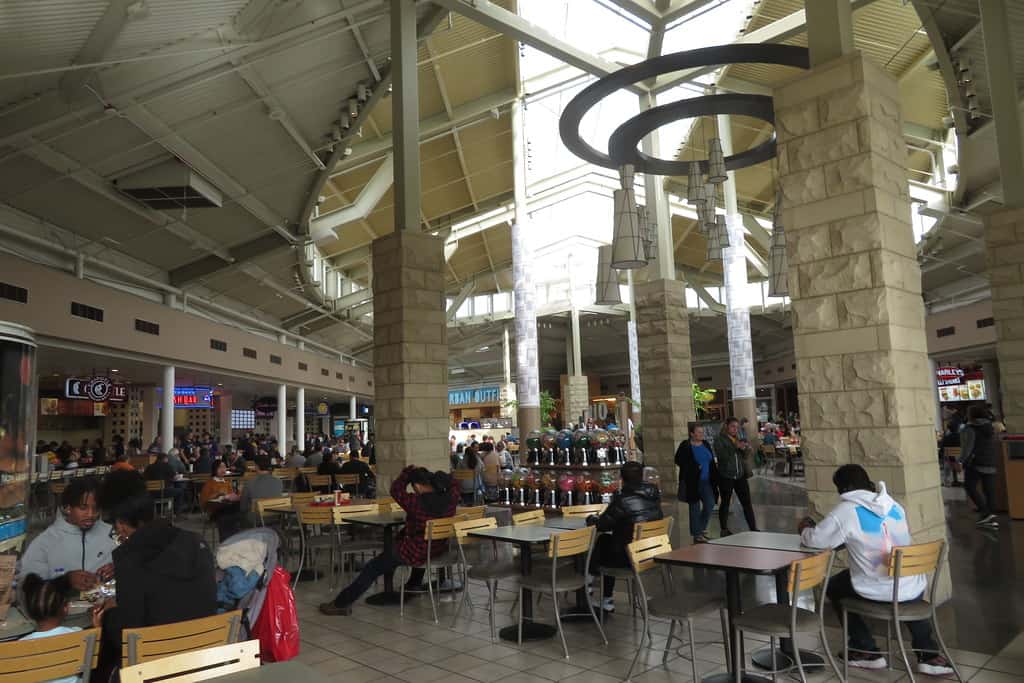
Retail Economics and Cultural Reference - Alderwood in Regional Context
Alderwood Mall's position has always been commercial first.
With 171 current stores, the property still ranks as the largest mall in Snohomish County.
But retail volume doesn't explain why it's held attention for four decades.
Few malls can claim they hosted both the first Daiso in the U.S. and one of the earliest Zumiez stores anywhere.
That kind of retail turnover happened alongside cultural moments.
The mall shows up in "Searchin' USA," a 1985 song by The Young Fresh Fellows.
The mention is casual and buried in a list, but the reference places Alderwood in a short list of commercial spaces that crossed into pop culture without trying.
Inside the region, Alderwood Mall stayed anchored while other shopping centers changed formats or closed outright.
Costco and Home Depot fill out that neighboring site, which used to hold Lynnwood High School, as well as Target, Kohl's, and Ashley to the east of the mall.
Taken as a whole, the area became more than retail. It became central real estate.
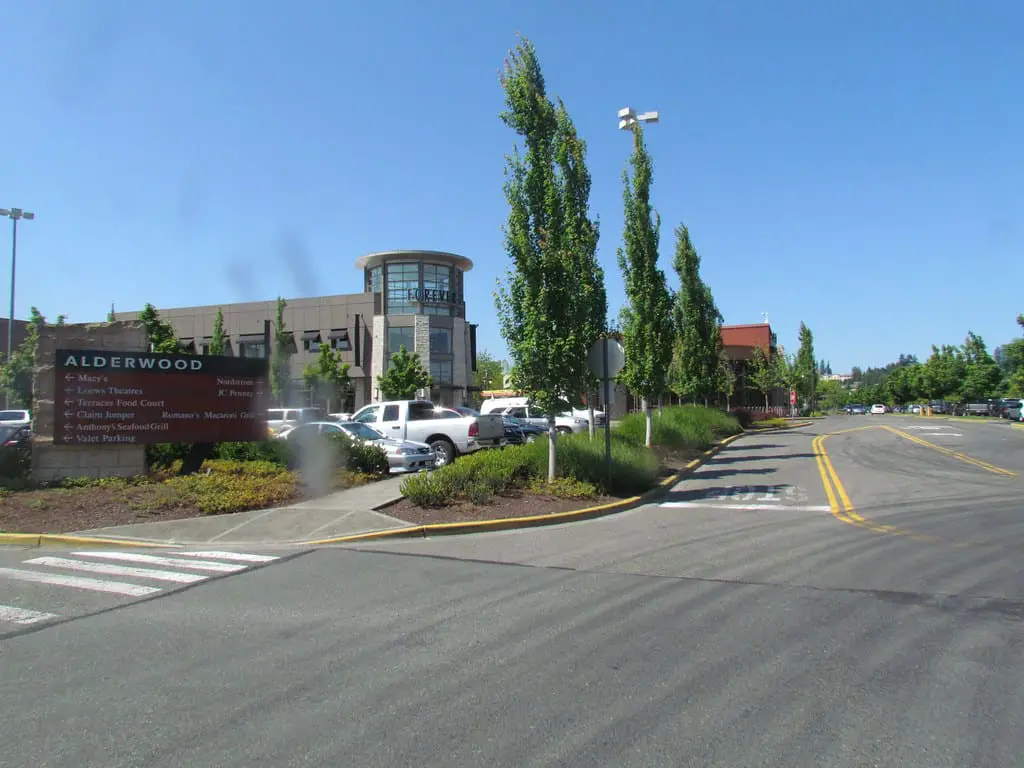
Safety Incidents and Site Response - Security Adjustments and Mall Policing
In early July 2024, an evening incident in the parking lot near one of Alderwood's main entries drew widespread attention.
A teenager lost her life following a shooting that occurred shortly before nightfall.
The event marked a rare but high-profile breach of public safety on mall property.
Authorities released security camera footage, and a local teen was taken into custody roughly one week later.
Charges were filed in juvenile court. The case prompted renewed attention to site security, especially around high-traffic hours and exterior spaces.
Another episode followed in January 2025. A man gained entry to the mall well after closing time by firing into a glass storefront.
He took a quantity of merchandise estimated around $20,000, mostly footwear from a high-end brand, and exited before police arrived.
He was later arrested and linked to a pattern of similar break-ins across multiple jurisdictions.
Since then, visible changes have taken shape. Patrol presence by Lynnwood officers has been expanded, especially on weekends and late evenings.
Coordination between mall management and public safety teams has reportedly grown more structured.
In September 2024, the site hosted a community outreach event involving local youth and officers meant to rebuild trust and increase interaction on neutral ground.
🍀

